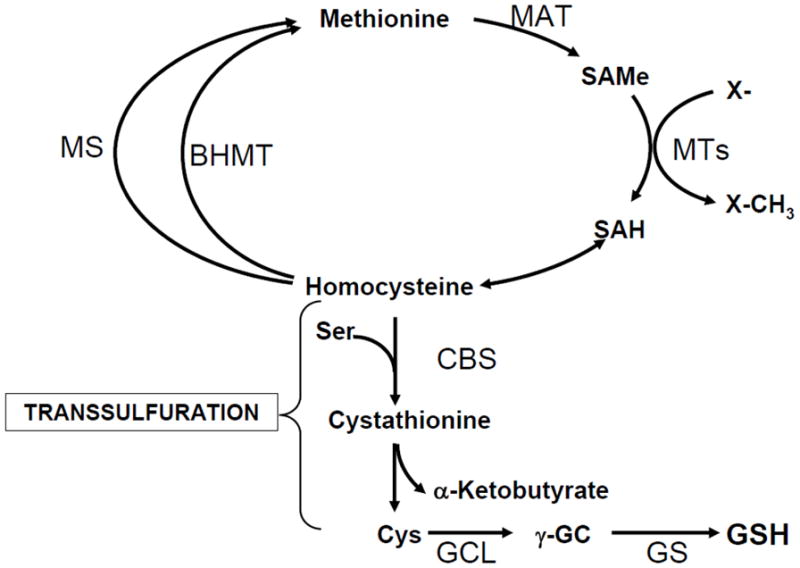Fig. 4. Hepatic methionine metabolism.

Liver plays a central role in methionine catabolism as up to half of the daily intake of methionine is catabolized to S-adenosylmethionine (SAMe) in the liver in a reaction catalyzed by methionine adenosyltransferase (MAT). SAMe is the principal biological methyl donor and donates its methyl group to a large variety of acceptor molecules in reactions catalyzed by methyltransferases (MTs). S-adenosylhomocysteine (SAH), generated as a result of transmethylation, is a potent inhibitor of all transmethylation reactions. To prevent SAH accumulation, it is hydrolyzed to homocysteine and adenosine is through a reversible reaction catalyzed by SAH hydrolase, whose thermodynamics favors biosynthesis rather than hydrolysis. Prompt removal of homocysteine and adenosine ensures SAH is hydrolyzed. Homcysteine can be remethylated to form methionine via methionine synthase (MS), which requires folate and vitamin B12 and betaine homocysteine methyltransferase (BHMT), which requires betaine. In hepatocytes, homocysteine can also undergo conversion to cysteine (Cys) via the transsulfuration pathway, a two-step enzymatic process catalyzed by cystathionine β-synthase (CBS) and cystathionase, both requiring vitamin B6. Liver has the highest activity of transsulfuration, which allows methionine and SAMe to be effectively utilized as GSH precursor.
